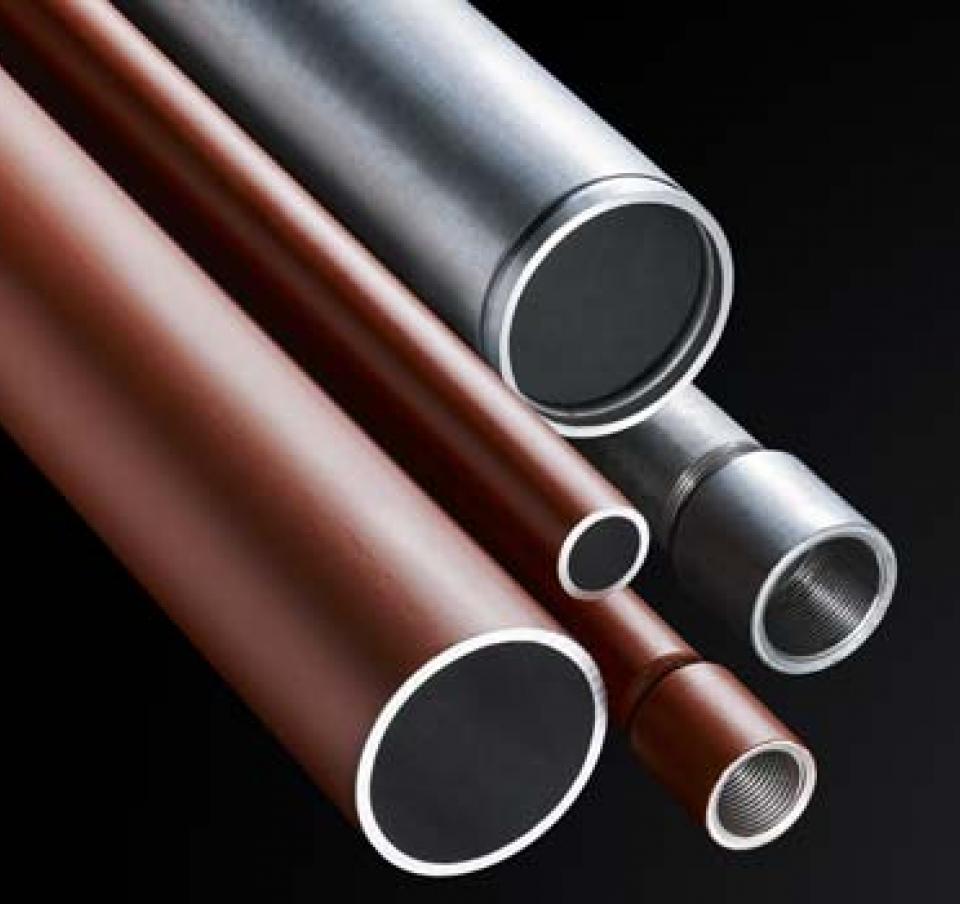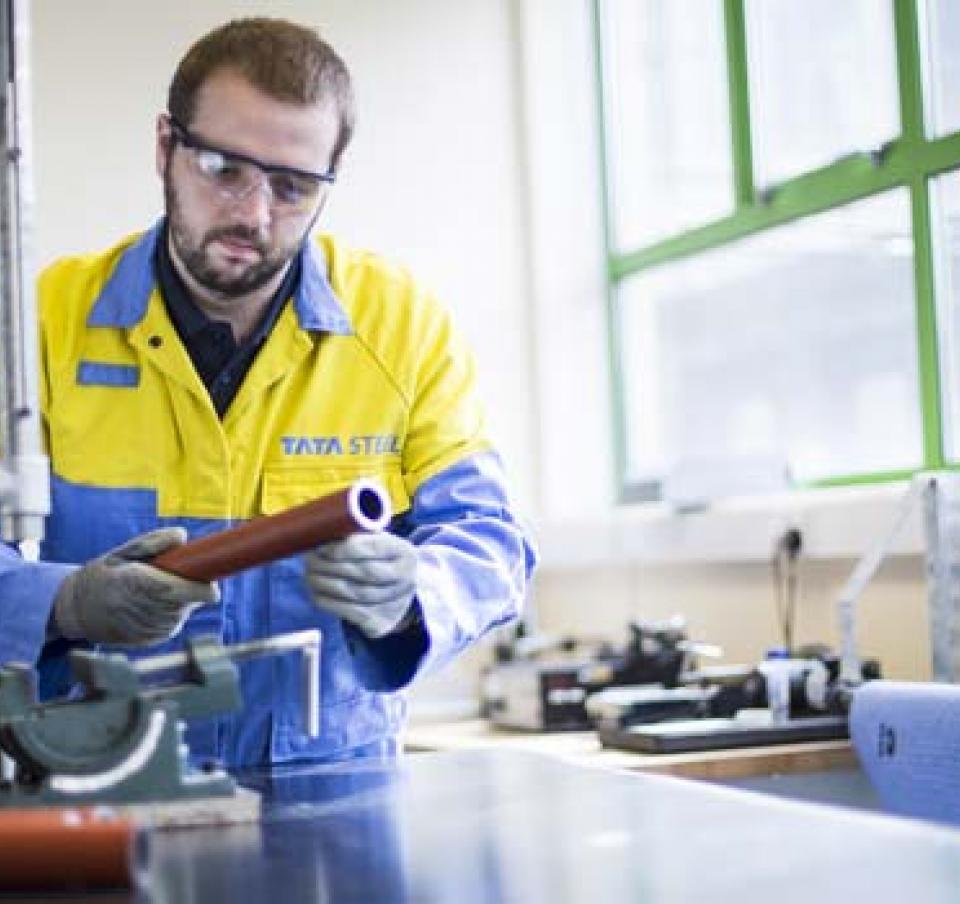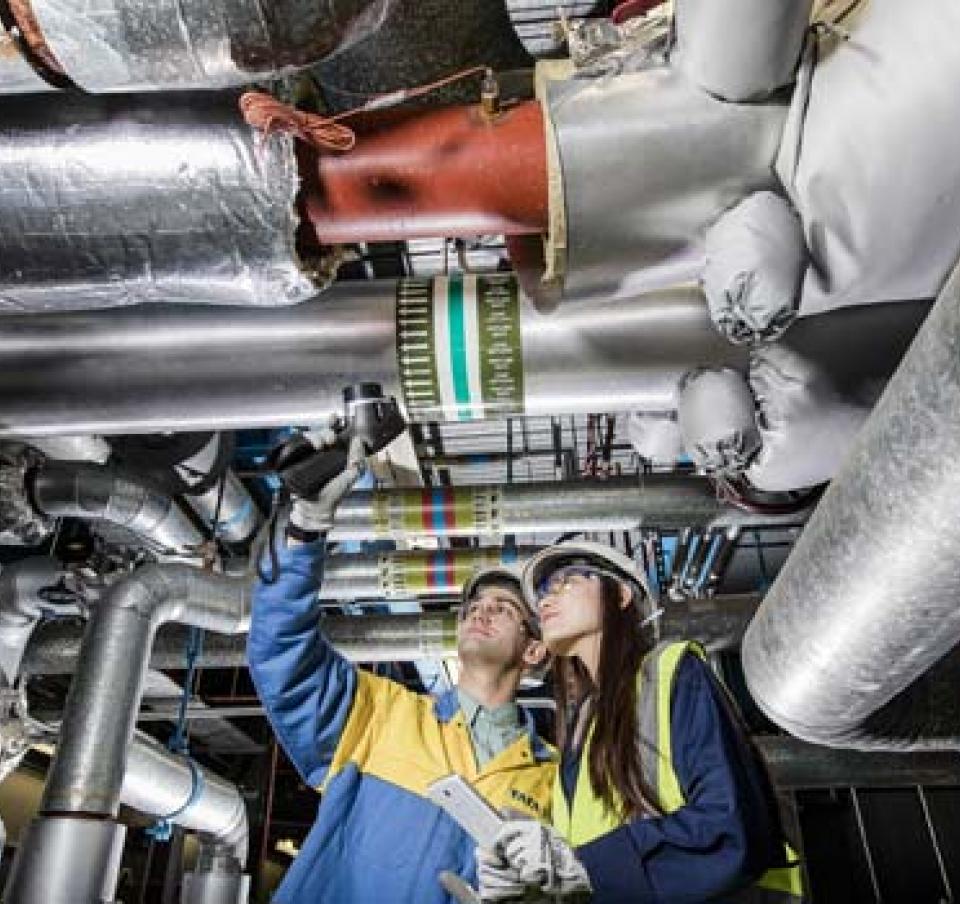Stewart Jones at Tata Steel discusses the benefits of using hot-finished tubes for such applications and other important factors that specifiers and engineers should consider. when choosing steel pipework
When choosing the steel pipework for building services, such as Heating, Ventilation or an Air Conditioning (HVAC) system, it can often be a minefield, as there are a range of products available on the market – some with better performance values than others. Here Stewart Jones at Tata Steel discusses the benefits of using hot-finished tubes for such applications and other important factors that specifiers and engineers should consider.
Before specifying pipework for HVAC systems, the operational stresses, system pressures and level of use should all be taken into account. Similarly, these same factors, along with legislation compliance, installation and service life benefits, need to be considered when choosing the system’s steel tubes.
Corrosive conditions
Through frequent usage, HVAC pipework can be exposed to both internal and external corrosive conditions. External localised corrosion can occur as a result of condensation on the exterior of the pipe, while internal corrosion can be caused by Ph variations, oxygen content or poor inhibitor use. If overlooked, this may result in the need to replace sections of pipe. Furthermore, hard water areas can lead to a build-up of limescale, which in turn can impact on system performance or result in expensive maintenance work. Therefore, it is vital that the correct steel tube is specified to avoid any such need for costly repairs, in addition to reducing the risk of product failure.
However, as a result of today’s market containing an influx of non-UK manufactured carbon steel tubes, this selection process can be complicated. While many of these tubes are produced according to similar product standards, have comparable mechanical properties and may look the same in appearance, it is possible that they could have a very different performance and hence be less suitable. It is therefore critical that specifiers and engineers understand the different tube manufacturing processes, so that the correct tube specifications are used, ensuring traceability, compliance, operational performance and service life.
There are generally two production methods for carbon steel tubes, either cold-formed or hot-finished. Cold-formed products are created by shaping steel strips into a cylinder and welding the edges together to create the final tube product. However, whilst undergoing this process the material can harden and become brittle due to the cold working.
The welding stage can also introduce internal stresses into the material structure, with the heat creating a distorted region commonly known as the Heat Affected Zone (HAZ). The altered grain structure of the HAZ results in a harder, more highly stressed region, with an increased risk of corrosion, cracking and service failure. In addition, any further product manipulation carried out on site can increase the level of internal structural stress, heightening the risk of product failure.
In comparison, while hot-finished tubes follow a similar manufacturing process to cold-formed products, there is a vital additional stage. Following welding, the tubes are heated to a high temperature sufficient to reduce brittleness and remove both the internal stresses and the distorted grain structure in the HAZ. This results in highly ductile tubes with a uniform fine grain structure throughout the entire product.
There are many benefits to be had from choosing hot-finished steel tubes for HVAC and other building services applications, over cold-formed alternatives, such as:
- A more ordered consistent microstructure
- No internal stresses that can promote cracking
- More consistent and reliable mechanical properties
- Improved structural integrity and ductility
- Improved and more consistent toughness, particularly at low temperatures
- A higher-pressure integrity
- A greater factor of safety
- No loss of strength due to additional welding or heating
- Greater corrosion resistance
- An improved ability to be threaded, grooved and bent to tight radii without splitting, creasing or collapsing
Following the recent publicity about the benefits of hot-finished over cold-formed steel tubes, today’s market can unfortunately contain imported products that are marketed as hot-finished but may actually be manufactured using the cold-formed technique. This could
clearly lead to serious problems further down the line, with specifiers and customers spending money on and installing what they believe are high-quality, long-lasting hot-finished tubes within their HVAC applications.
Specification factors
Typically, HVAC applications refer to tubes manufactured in accordance with BS EN10255, which replaced BS1387 (withdrawn in 2004). However, even specifying this standard will not guarantee the supply of a hot-finished tube. In fact, it is only by requesting a BS EN10217 Part 2 compliant product, with its GH (Get Hot) grade, that a hot-finished tube will be supplied. Declarations of Performance (DOP’s) or other manufacturing compliance documentation should also be requested to ensure that your material is actually hot-finished and not an imitation.
While the selection of a hot-finished steel product, as opposed to the cold-formed alternative, can help reduce the risks of corrosion initiation and other service life issues, there are also other specification factors to be considered to further avoid component damage and ensure long-term product performance.
For example, building services should avoid the use of mixed metals, as having a variety of metal components in such a moist, damp internal environment as conditioning HVAC system can lead to galvanic corrosion. Not only can this cause corrosion within the steel pipes, it can also affect other, more expensive, metal components within the system, potentially causing the whole system to fail and resulting in expensive maintenance and repair costs.
Care should also be taken when including metals such as stainless steel. While stainless steel on its own is highly corrosion resistant, people are often unaware that when it is brought into contact with other materials in a damp environment (such as within HVAC systems), it can cause higher levels of corrosion for other metal components.
Hot-finished Benefits
Tata Steel’s Install® Plus 235, a carbon steel tube, hot-finished and multi-certified tube has been specifically developed and manufactured within the UK, and aligned with both the Construction Products Regulations (CPR) and the Pressure Equipment Directive (PED) as per BS EN10255 and BS EN10217 Part 2. It comes available with the enhanced Tata Steel red paint finish as standard, which is proven to further reduce the risk of corrosion from external condensation. This coating has undergone significant testing, including accelerated salt spray and humidity susceptibility, ensuring optimum performance for the tube within its lifespan.
As demonstrated, hot-finished tubes have a multitude of benefits over their cold-formed counterparts and can offer a longer, more reliable service life. The selection of metals used within a HVAC system should also be considered, as the damp conditions can lead to incredibly damaging galvanic corrosion. Due to the variety of steel tube products available, it is important that specifiers and engineers fully investigate a product’s manufacturing process, metal contents and the key manufacturing standards in order to ensure the longevity and durability of the steel pipework used for HVAC applications.
For more information, please visit: www.tatasteelconstruction.com/hotvscold



































































































































































































































